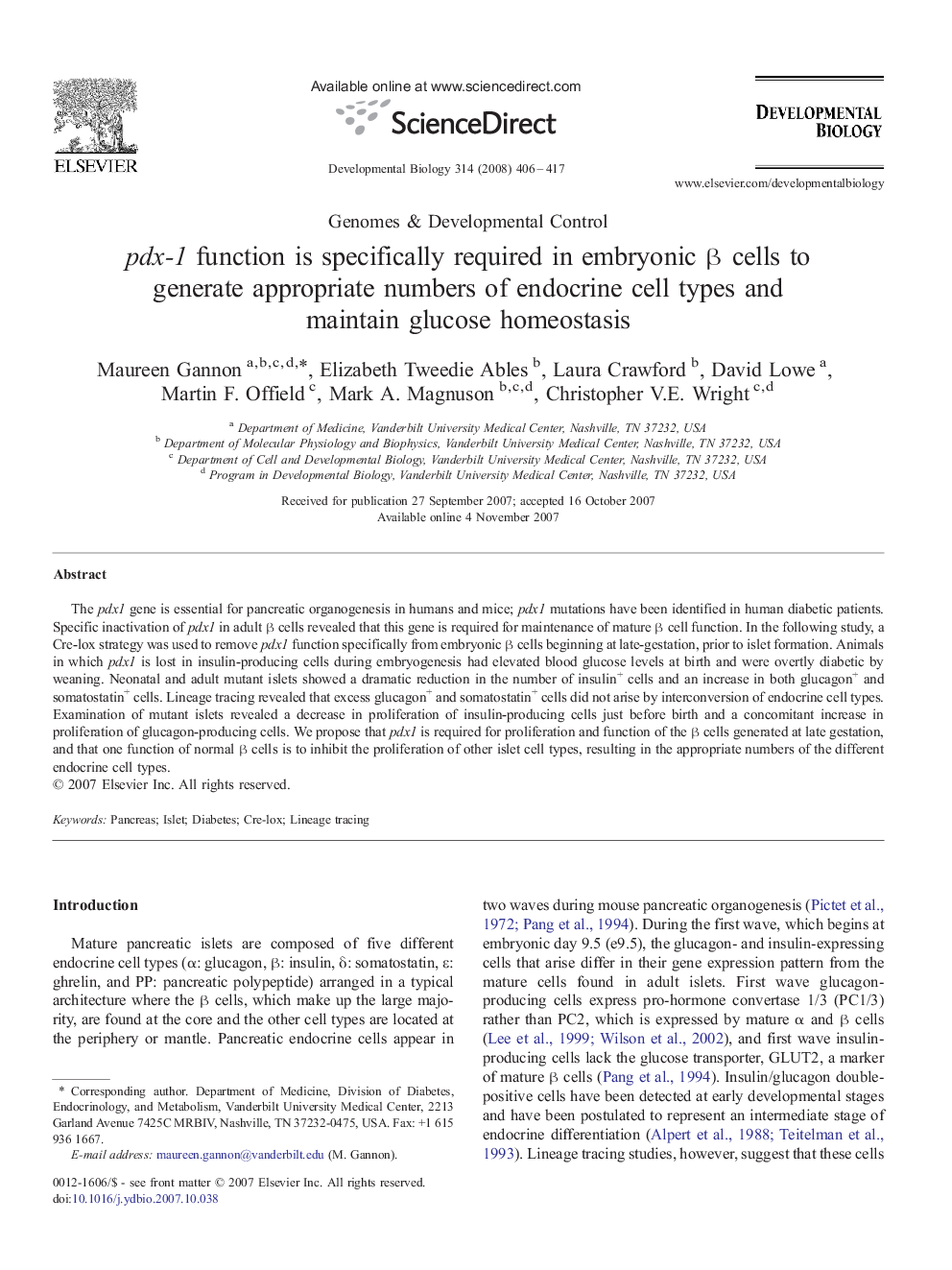| کد مقاله | کد نشریه | سال انتشار | مقاله انگلیسی | نسخه تمام متن |
|---|---|---|---|---|
| 2174704 | 1093811 | 2008 | 12 صفحه PDF | دانلود رایگان |

The pdx1 gene is essential for pancreatic organogenesis in humans and mice; pdx1 mutations have been identified in human diabetic patients. Specific inactivation of pdx1 in adult β cells revealed that this gene is required for maintenance of mature β cell function. In the following study, a Cre-lox strategy was used to remove pdx1 function specifically from embryonic β cells beginning at late-gestation, prior to islet formation. Animals in which pdx1 is lost in insulin-producing cells during embryogenesis had elevated blood glucose levels at birth and were overtly diabetic by weaning. Neonatal and adult mutant islets showed a dramatic reduction in the number of insulin+ cells and an increase in both glucagon+ and somatostatin+ cells. Lineage tracing revealed that excess glucagon+ and somatostatin+ cells did not arise by interconversion of endocrine cell types. Examination of mutant islets revealed a decrease in proliferation of insulin-producing cells just before birth and a concomitant increase in proliferation of glucagon-producing cells. We propose that pdx1 is required for proliferation and function of the β cells generated at late gestation, and that one function of normal β cells is to inhibit the proliferation of other islet cell types, resulting in the appropriate numbers of the different endocrine cell types.
Journal: Developmental Biology - Volume 314, Issue 2, 15 February 2008, Pages 406–417